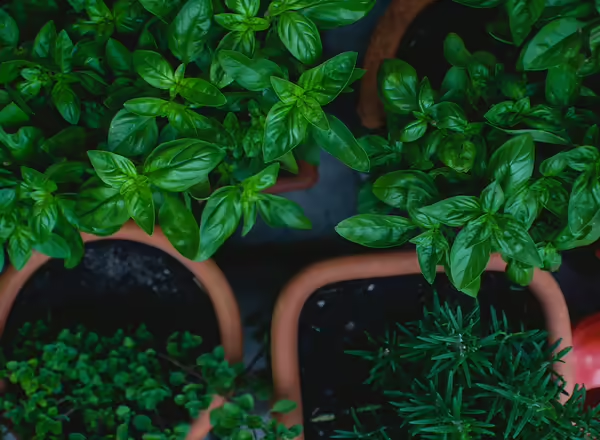
Many herbs can be grown in containers, making them more visible if they are planted for beauty. Herbs are annual and perennial plants. Annual herbs are grown for one season, harvested when flower buds develop, and the plants are discarded at the end of the season. Perennial herbs grow year after year and can be brought indoors during winter.
Herbs that require well-drained soils and tender herbs that need to be overwintered indoors are more suitable for container gardening than other types of herbs. Herbs can be grown in any type of container so long as it has drainage holes. Use loose, well-drained potting mix. Select herbs that are small and slow growing. Several kinds of herbs or a mixture of herbs and flowers can be planted in one container depending on its size.
Some of the herbs recommended for container gardening are: Variegated sage, purple sage, golden sage, parsley, Greek oregano, rosemary, marjoram, bush basil, thyme, chives, and summer savory. Water requirements vary from plant to plant. Apply water until it starts to drip from the drainage holes. Do not over fertilize herbs. Pinch the plants during the growing season to keep them bushy and compact. Remove any dead or diseased leaves. Herbs growing in containers can be moved indoors during winter but remember to acclimatize them in early fall. Herbs can be moved indoors gradually so that they can get adjusted to indoor temperature and light. Put them in the sunniest location in the house or whereever they can get as much light as possible. Water plants only when the soil is dry. Check plants for common indoor insect pests such as aphids, spider mites, thrips, and whiteflies, and apply control measures when needed.
Leafy herbs need to be harvested when the leaf quality is optimal and this can be determined by the flower buds when they first appear. Harvest by removing top leaves and stems with a sharp knife. When harvesting annual leafy herbs, leave four to six inches of shoots on the plant for better re-growth. Harvest perennial herbs less heavily by removing only the top third of the plant as compared to annual herbs since future harvests will depend on new growth. Herbs can be used fresh or dried. Container grown herbs can also be grouped according how they are used as follows: Italian cuisine (basil, oregano, parsley, sage, rosemary, thyme); aromatic herbs (sage, lavender, chamomile); and teas and beverages (spearmint, peppermint, chamomile).